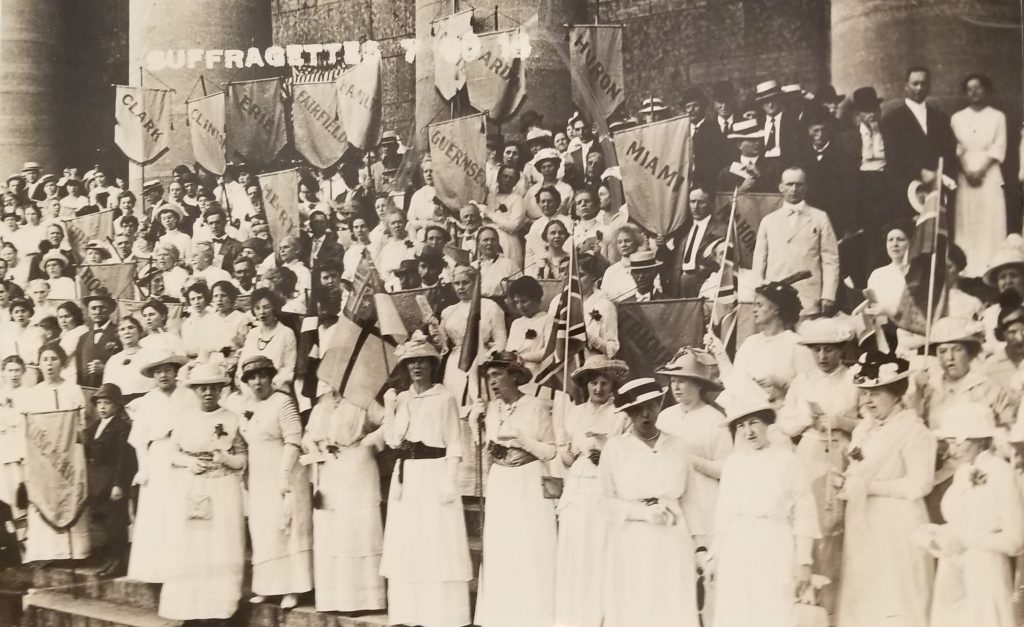
The Ohioana Library Association was founded by Martha Kinney Cooper, First Lady of Ohio; the first book in Ohioana’s collection, History of the Western Reserve, was donated by its author, Harriet Taylor Upton; Ohioana’s first executive director was Florence Roberts Head, who helped Martha Cooper found the library. These are a few of the extraordinary women who are responsible for Ohioana’s existence thanks to their intelligence, expertise and dedication to the literature of Ohio. In 1929, the year of Ohioana’s founding, these women had had the right to vote for less than a decade.
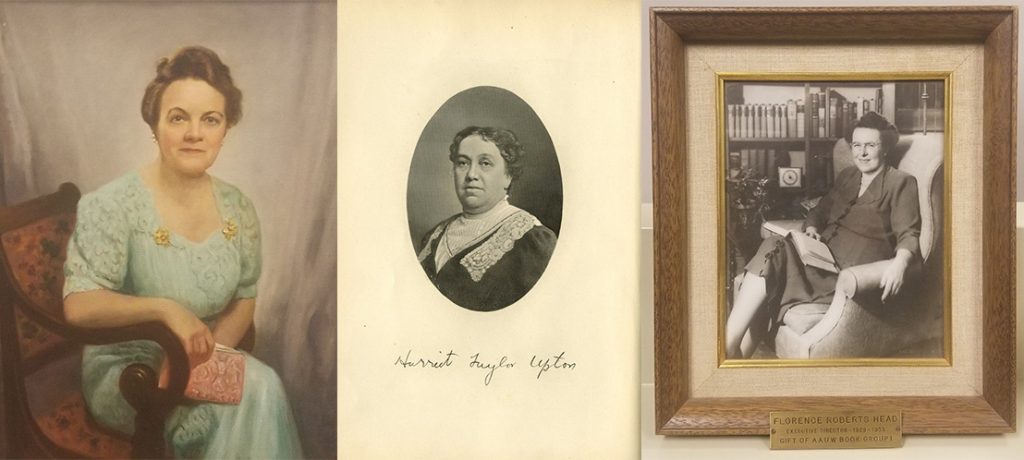
In 1919 the Senate passed the Nineteenth Amendment, prohibiting the states and federal government from denying citizens the right to vote on the basis of sex. In August of 1920, the amendment was ratified, and women’s suffrage was adopted nationally. Yet the struggle for women’s suffrage began nearly a century earlier, when women’s conventions began to be established in protest of the discrimination women were experiencing across the country. One of the most significant of these conventions, and the first that was organized statewide, was the Ohio Women’s Convention at Salem. The Convention met April 19-20, 1850 in Salem, Ohio, where more than 500 women were in attendance.
The Salem, Ohio 1850 Women’s Rights Convention Proceedings, complied and edited by Robert W. Audretsch, gives a history and full account of the proceedings of the Ohio Women’s Convention. An excerpt from the text reads,
“It is quite likely that the women who met in Salem for the convention did not realize the history they were making. It was the first women’s rights convention held west of the Alleghenies; it was very likely the second such convention held in the U.S.; and it is probably the first public meeting in the U.S. where the planners, participants and officers were exclusively women.”
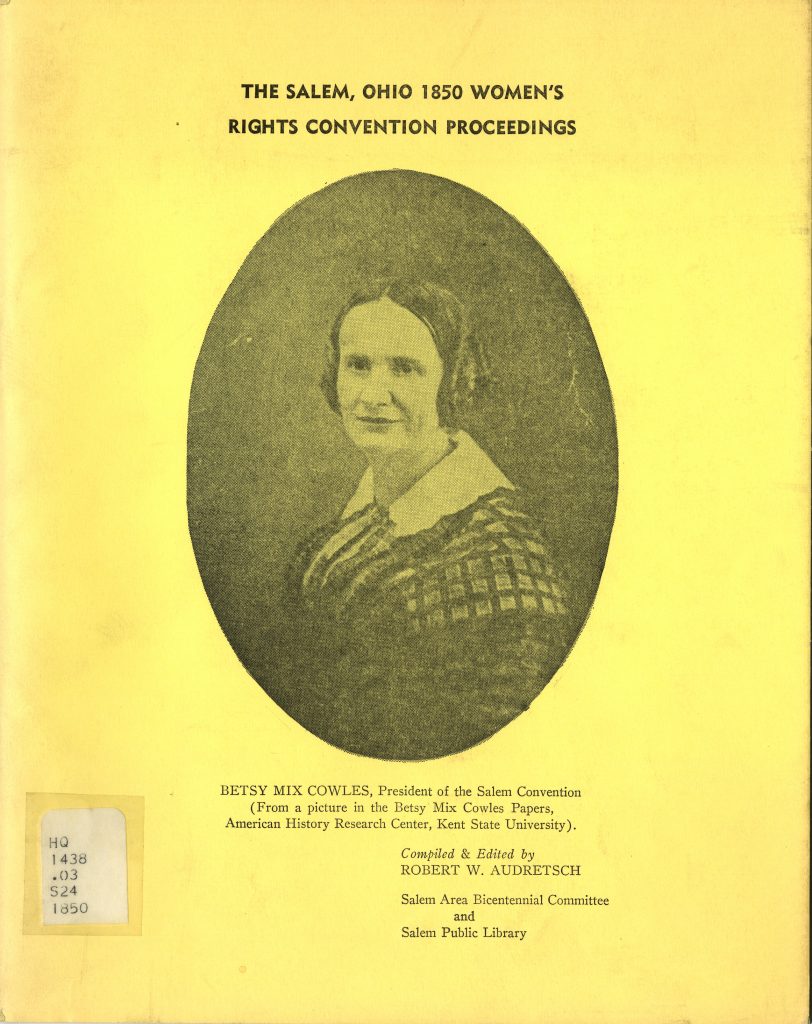
Conventions like these provided a place for women to meet and discuss some of the ways in which they were being discriminated against – such as the denial of the right to vote, unequal wages, unequal educational opportunities, and women not having control over their property. These meetings illuminated the fact that individual women were not alone in feeling they were being treated unfairly, and that they no longer wished to stand for it.
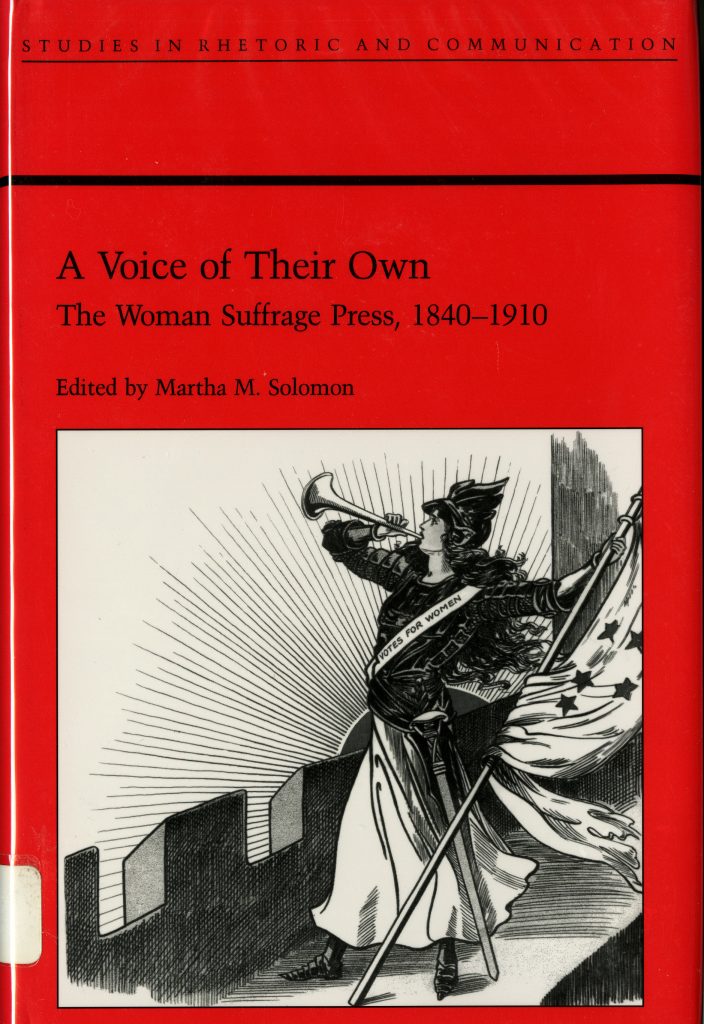
The convention in Salem is regarded as a pivotal point for women’s suffrage in Ohio, which would continue earnestly for the next 70 years until the vote was secured. It’s unfortunate that many of the woman who organized and attended the convention did not see the day that women’s right to vote was recognized nationally – however, their efforts were essential in starting the conversation and movement that resulted in the nationwide change.
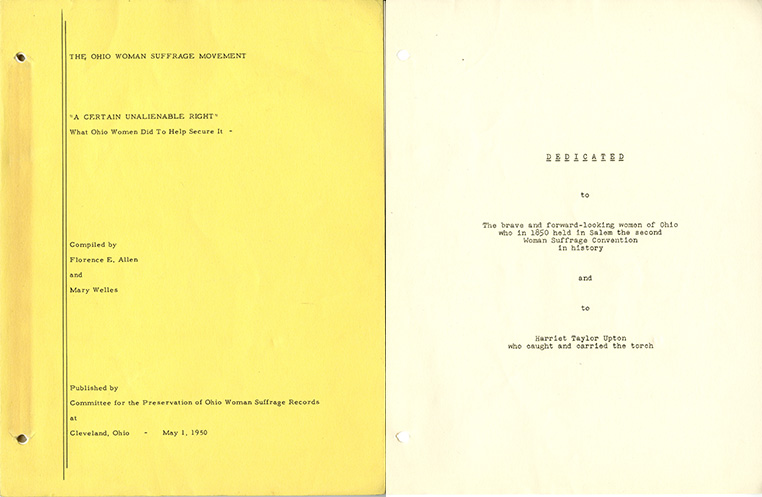
One of the leading voices in support of women’s suffrage in Ohio leading up to 1920 was none other than Harriet Taylor Upton, who would become Ohioana’s first contributing author. Upton was born December 17, 1853, and during her life served as a key organizer and first president of the Suffrage Association of Warren, member and treasurer of the National American Woman Suffrage Association (NAWSA) and president of the Ohio Woman Suffrage Association. More of her life and efforts are detailed in The Ohio Woman Suffrage Movement, a document compiled by Florence E. Allen and Mary Welles to detail the history of suffrage in the state of Ohio.
During this year, the 100th anniversary of the passing of the nineteenth amendment, we remember those who stood up against great odds in order to bring women closer to equality. The texts and images featured in this post, as well as many others regarding Ohio’s women’s suffrage movement, can be found in the Ohioana Library Association’s collection.
